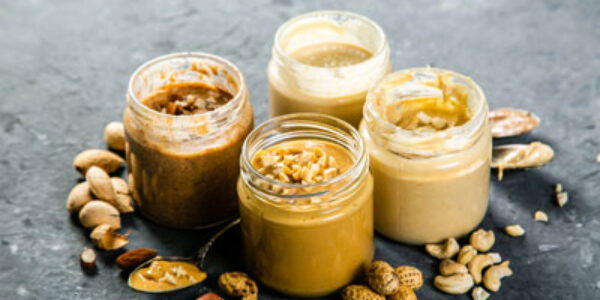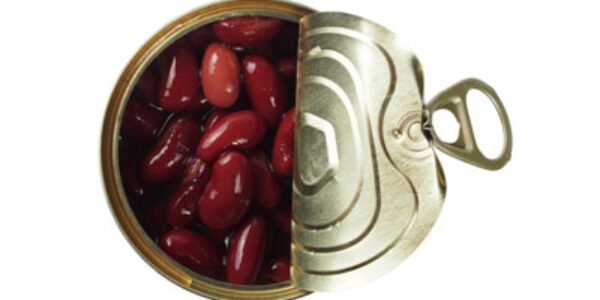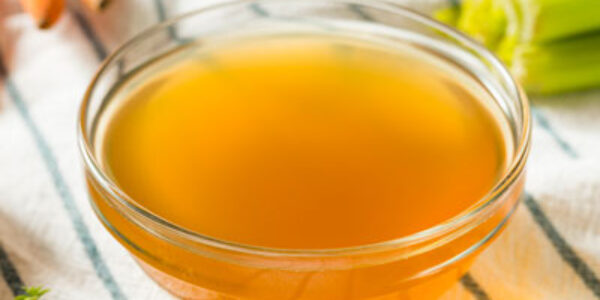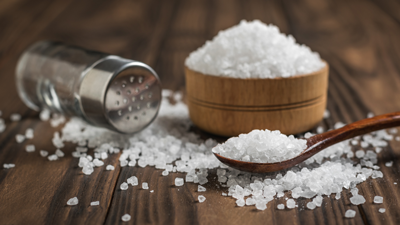
Sodium is an important mineral used by our body to maintain a proper balance between water and minerals, to conduct nerve impulses, and to contract and relax our muscles.
The good news is that we don’t need that much of it, according to the American Heart Association, most of us use less than 500 mg/day, an amount that we can reach through a balanced whole-food, plant-based diet. Unfortunately, most of us are getting too much, an average of 3,393 mg/day (ranging from 2,000 to 5,000 mg/day) through salt and other food additives like soy sauce or baking soda and baking powder.
Excess sodium can raise our blood pressure, stiffen our arteries and impair artery function, and cause strong reflexes and loss of muscle control. The higher our sodium intake is, the higher its impact on our heart and our brain health, increasing our risk of developing cardiovascular disease, heart failure and strokes. Other organs that get affected are our kidneys and our bones.
Since there is a higher risk of getting too much sodium than not getting enough, this page focuses on how to avoid high intakes. Our nutrition calculator, based on the Dietary Guidelines for Americans 2020-2025 also focuses on the highest sodium intakes that are considered safe for us based on our age and sex. And we will share important information that can help you limit your sodium intake and your family’s.
Sodium Amounts Found in Lightly Processed Foods
Even when we aim at following a whole-food, plant-based diet, most of us live busy lives and oftentimes rely on products, like the ones below, to make our meals. These are typically lightly processed foods, with no artificial additives, that are often made with organic ingredients. Still, they could have excessive amounts of sodium through added salt.
Always remember to read the nutrition labels before buying any processed foods. Pay attention to the serving amount listed as well. Sometimes, it may appear like the sodium amount is low until you realize the serving is only 1/3 or less of what you would actually eat.
Hover over each picture to discover the amounts of sodium provided by some common brands. Note that sometimes you can get “no salt” or “low sodium” versions that highly reduce sodium content.

Commercial Bread (1 slice)
Oroweat Whole Grains 100% Whole Wheat, 135 mg | Nature’s Own 100% Whole Wheat Bread, 110 mg | San Luis Sourdough, 230 mg | Dave’s Killer Bread Organic 21 Whole Grains and Seeds, 170 mg | Ezequiel 4:9, 75 mg

Store-Bought Marinara Sauce (1/2 cup)
Bertolli, 490 mg | 365 Organic No Fat Marinara, 410 mg | RAO’s, 340 mg | Muir Glen Tomato Basil (no sugar) 310 mg | Thrive Low Fodmap, 290 mg | Sprouts Organic Marinara No Salt, 30 mg

Commercial Nut Butters (2 Tbs)
Peanut Butter: Skippy Super Crunchy (125 mg) | Laura Scudders Old Fashioned Nutty (95 mg) | MaraNatha Organic (70 mg) | Jif Natural Crunchy Low Sodium (65 mg) | Santa Cruz Organic No Stir Crunchy Dark Roast (50 mg) | Once Again Crunchy No Salt Added (0 mg) \\ Sunflower Seed Butter: Sunbutter Organic (<5 mg) | Simple Truth Organic (125 mg) \\ Almond Butter: Thrive (0 mg) | Kirkland (0 mg) \\ Cashew Butter: 365 (0 mg) | Simple Truth Cashew Butter (0 mg)

Canned Beans (1 can)
Bush’s Black Beans, 1350 mg | Goya Black Beans, 1,435 mg | Goya Black Beans Low Sodium, 473 mg | Simple Truth Organic Black Beans, 490 mg | 365 Organic Black Beans No Salt Added 17.5 mg | Eden Organic Black Beans with Kombu 52.5 mg

Store-Bought Veggie Broth (1 cup)
Organics Vegetable Broth, 570 mg | Kettle and Fire, 480 mg | Simple Truth Low Sodium, 125 mg | Pacific Low Sodium, 125 mg | Bonafide no salt, 60 mg

Commercial Tortillas (1 tortilla)
Mission Flour Tortilla Soft Taco (410 mg) | Mission Whole Wheat Original (380 mg) | Guerrero Flour Tortillas (250 mg) | Ezequiel 4:9 (125 mg) | Siete Almond Flour (110 mg) | La Tortilla Factory Yellow Corn and Wheat (190 mg) | Guerrero White Corn (20 mg) | Mi Rancho Organic Corn Tortillas (0 mg)
Sodium Personalized Calculator
As opposed to other nutrients, the Dietary Guidelines for Americans, 2020-2025 provides maximum intake recommendations or Chronic Disease Risk Reduction Intake (CDRR) for each age group above one year old. In addition to these numbers, we also provide Adequate Intake (AI) recommendations from the National Academies of Sciences, Engineering and Medicine, and for reference purposes only, we include sodium intake recommendations in Australia were the amounts for children are lower.
The World Health Organization (WHO) recommends that adults aim at a maximum of 2,000 mg/day and that children decrease these amounts based on their energy requirements. The American Heart Association indicates that most healthy adults should ideally aim at 1,500 mg/day.
These amounts are for information purposes only. Please talk to your doctor or pediatrician to determine the sodium intake amounts that are most suitable for you and your loved ones.
Terminology:
- Daily Value (DV): The recommended amount of nutrients to consume each day for individuals who are 4 years old or older.
- Adequate Intake (AI): Babies between 7 and 12 months old are the only age group who gets a sodium Adequate Intake amount, which is based on observed or experimentally determined approximations of healthy individuals.
- Chronic Disease Risk Reduction Intake (CDRR): Amount recommended to reduce our sodium intake to in order to reduce the risk of cardiovascular disease, hypertension, systolic blood pressure, and diastolic blood pressure within an apparently healthy population.
- Recommended Intake (RI) in Australia: Sodium intake recommendations in Victoria State, Australia to see as a reference.
Important Things to Know
Comparison of Sodium Sources
You may be wondering about other potential sources of sodium, such as supplements and meat. Below we make a quick and simple comparison between the three options.
References










